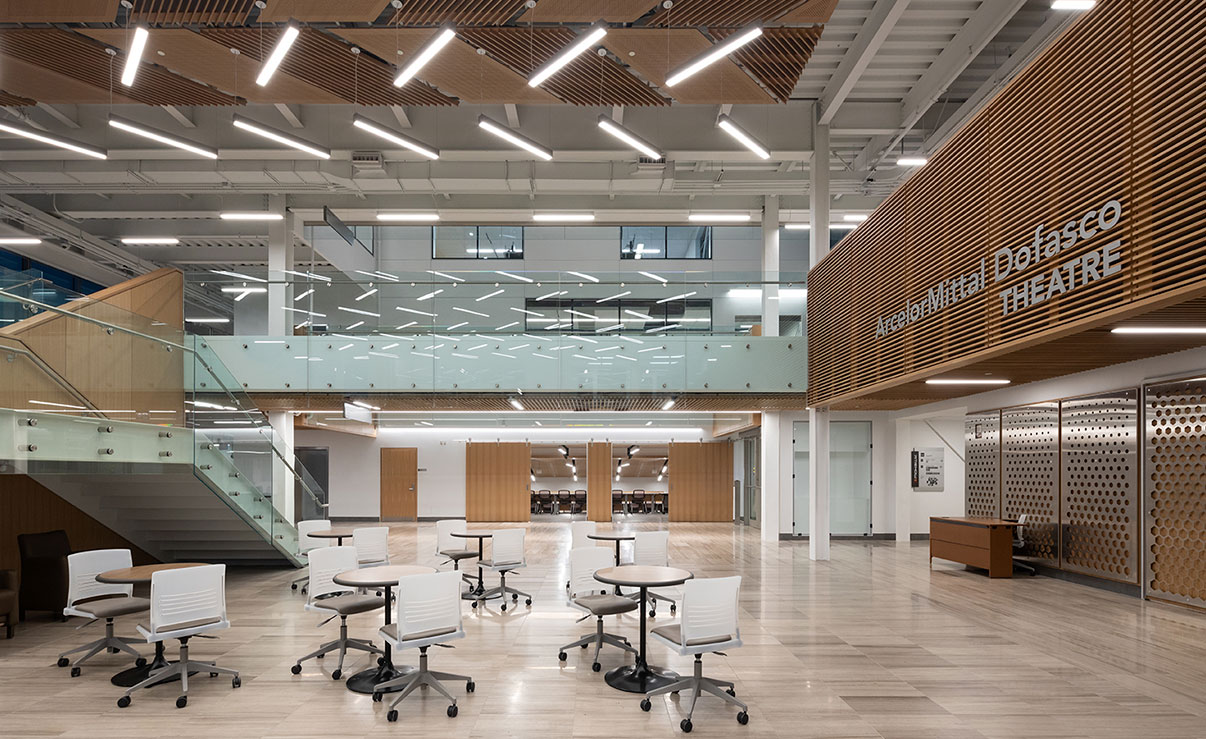A hot topic in the news this fall, Mohawk’s Joyce Centre for Partnership & Innovation is fast becoming the go-to institutional building case study for students of sustainability across the country.

As the largest institutional Net Zero building to date in Canada, this 96,000-square-foot, five-story building was extremely involved, with many special functionalities and features that support the role it was designed to play as a “living lab” for students. The building’s solar power, electrical, HVAC and ICT system infrastructure and equipment were designed and configured to be visible and prominent. Interactive energy dashboard screens in the lobby complete the set up for student monitoring and management of systems.
“Several aspects of the electrical systems showcase how sustainable this building really is” explains Remus Banulescu, Project Director for the JCPI at Mulvey & Banani International Inc. (MBII). “With lighting being one of the main energy consumers, MBII’s main focus was on the design of illumination systems and the selection of light sources to drive down the overall lighting power density per square foot.”
High-efficiency, long-life, low power consumption LED light fixtures complete with 0-10V dimming drivers were specified, paired with dual technology occupancy and daylight sensors in all enclosed spaces and rooms. Daylight dimming sensors that are synced with the overall daylight harvesting strategies were included in all areas with glazing. A wireless web-based lighting control system tied the lighting systems altogether, allowing for time-based, sensor-based (both occupancy and daylight), and local lighting control stations. Additionally, the control system is capable of controlling (ON/OFF and dimming) and adjusting/overriding programming of lighting zones remotely, from any internet connected device via web-based software.
All tallied, the overall building interior lighting power density amounts to approximately 0.5W/sq. ft, an impressive reduction of over 40% from the Ashrae Standard 90.1 (2013).
The list of electrical energy saving initiatives goes on, including a digital web-based energy metering system for real-time monitoring of energy spend via the lobby’s interactive screens, and premium efficiency power transformers. PoE (Power over Ethernet) lighting was designed for the Physics & Metrology Lab and 24VDC lighting was designed for the Clean & Renewable Energy Lab and Collaboratory/Commons spaces to test and showcase these emerging technologies.
“The project was not without challenges” recalls Banulescu “a tight design schedule was required in order to meet the Government of Ontario Netzero project grant deadline, and multiple College user groups, all with very diverse program specific requirements for individual and shared spaces, were the two most demanding.” Many detailed design coordination meetings with all stakeholders ensured the systems components and devices were closely tailored to suit the mission.
“The level of energy efficiency achieved through the primary lighting and lighting control initiatives is quite high’” says Banulescu, “combined with how we were able to maximize convergence and integration of Electrical, ICT, Security and AV systems and technologies is exceptional – truly a milestone for MBII and projects in this sector!”